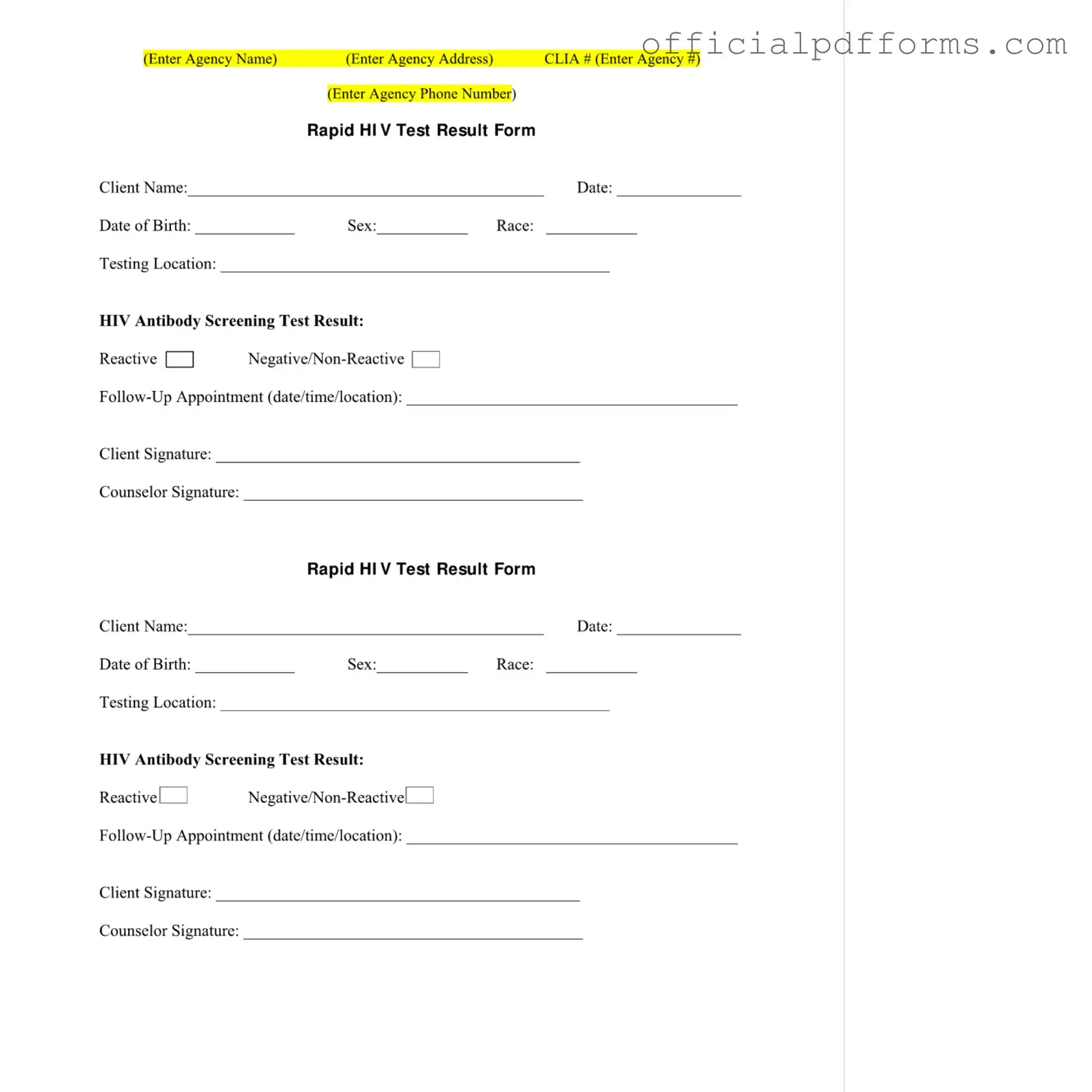The Negative HIV Test Form is a document that confirms an individual's HIV antibody screening test result is negative or non-reactive. It includes essential information such as the client's name, date of birth, testing location, and the result of the test.
The form contains the following key details:
-
Client Name
-
Date of Birth
-
Date of the test
-
Sex and Race
-
Testing Location
-
HIV Antibody Screening Test Result
-
Follow-Up Appointment details
-
Signatures of the client and counselor
How do I interpret the test result?
The test result will indicate either "Reactive" or "Negative/Non-Reactive." A "Negative/Non-Reactive" result means that no HIV antibodies were detected in your blood, suggesting that you are not infected with HIV. However, a "Reactive" result requires further testing for confirmation.
What should I do if I receive a reactive result?
If you receive a reactive result, it is crucial to follow up with your healthcare provider for confirmatory testing. Reactive results can occur, but they are not definitive. Follow-up testing will provide more accurate information regarding your HIV status.
Is there a follow-up appointment required?
A follow-up appointment is often recommended, especially if the test result is reactive. The form will typically include a section to schedule this appointment. It is important to attend this appointment for further evaluation and support.
The test is usually conducted by a trained counselor or healthcare professional. A small sample of blood is taken, often via a fingerstick, and the sample is tested for HIV antibodies. The results are typically available within a short period, often in 20 minutes or less.
If you lose your form, contact the testing agency immediately. They can provide you with a duplicate or verify your test results. It is important to keep a record of your HIV status for your health and any necessary medical care.
Can I request a copy of my test results?
How often should I get tested for HIV?
What are the storage requirements for the testing materials?
The testing materials must be stored at specific temperatures to ensure accuracy. For example, Clearview® COMPLETE tests should be stored between 8 to 30°C (46 to 86°F). Daily checks of storage conditions are essential, and corrective actions must be taken if temperatures fall outside the acceptable range.
